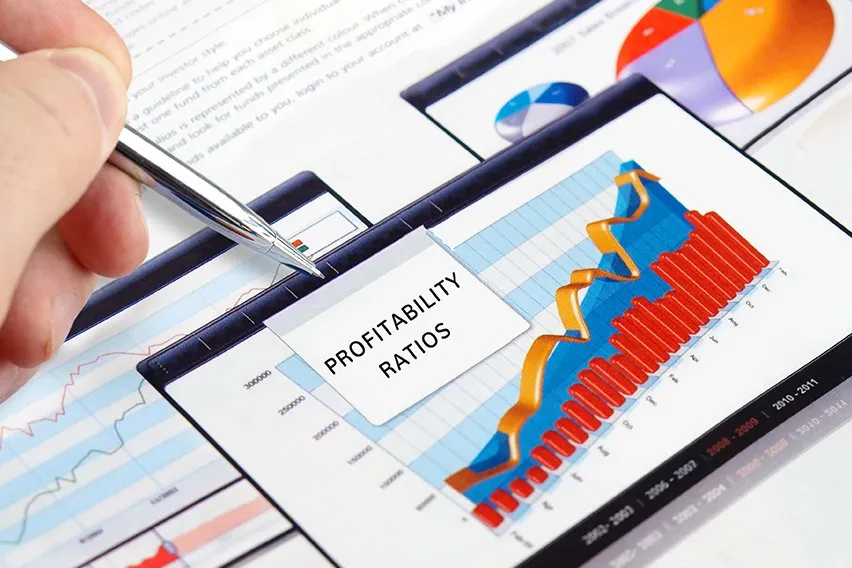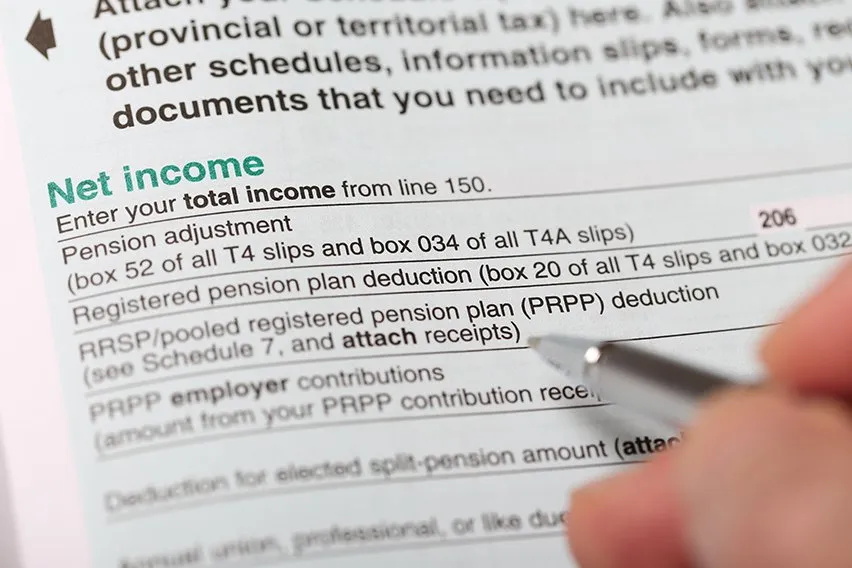What are Pro Forma Financial Statements?

When you’re running a business, it’s vital that you are able to keep a close eye on your financial statements.
You may be looking to highlight certain aspects of your finances for potential investors. Or you could just want to keep track of how your business is performing. Either way, it’s always a smart move to be aware of your financial situation.
There are a number of ways that businesses can calculate their financial results. One of these methods is through performing pro forma financial statements.
But what exactly are pro forma financial statements? We’ll take a closer look at the definition and try to answer the most common questions that surround this method of calculation.
Here’s What We’ll Cover:
What Is a Pro Forma Financial Statement?
Where Might a Pro Forma Financial Statement Be Used?
What are the Different Types of Pro Forma?
What Does a Pro Forma Statement Look LIke?
What Is the Difference Between Pro Forma Statements and a Business Budget?
History of Pro Forma in Business and Accounting
How Do You Create a Pro Forma Income Statement?
What Is Pro Forma?
Oxford dictionary defines pro forma as;
“Done or produced as a matter of form.”
Pro forma is actually a Latin term, which translates to “as a matter of form” or “for the sake of form”. But when put in a business context, it is a method of calculating financial results using certain presumptions or projections.
Pro formula financials are not calculated using the standard United Kingdom generally accepted accounting principles, or UK GAAP.
They tend to leave out one-time expenses that are not a part of the day-to-day company operations. For example, they would generally leave out expenses such as restructuring costs. This might be after a merger or acquisition has taken place.
Put simply, a pro forma financial statement can exclude anything a company believes would obscure or mislead the accuracy of it’s financial outlook. This means that it can be a useful piece of data that can help to assess a company’s future prospects.

What Is a Pro Forma Financial Statement?
Pro forma financial statements are a form of financial report that businesses use to project future conditions.
They utilize presumptions about hypothetical conditions. These are conditions that have occurred in the past and/or conditions that may happen in the future.
These hypothetical conditions are then used to project the most likely outcome for a series of corporate results.
To give a common example, a businesses budget is a variation of a pro forma financial statement. This is because a budget is calculated by looking at past budgets and weighing up the predicted cost of future expenses.
Budget calculation is based on these certain assumptions. It looks at historical data and then calculates based on this information plus any predicted future costs.
Where Might a Pro Forma Financial Statement Be Used?
Pro forma statements are used to present expected corporate results to outsiders.
They are also often used in investment proposals to give an indication of the validity of the business to a potential investor. It is used to highlight certain specific figures that a company may want to draw potential investors’ attention to.
A company may also design a pro forma statement, leveraging proposal software, to assess the potential earnings value of a proposed change in business. This may be in the form of an acquisition or a potential business merger.
There is one thing to be aware of from an investment perspective. A company’s pro forma financial statement may contain figures or calculations that are not in line with the UK GAAP.
Anything that is based around assumption should be taken with a grain of salt. This is because sometimes pro forma figures vastly differ from statements generated within a UK GAAP framework.
What are the Different Types of Pro Forma?
There are three different categories of pro forma statements:
- Pro forma income statements
- Pro forma balance sheets
- Pro forma cash flow statements
Within these categories, there are four major pro forma statements that businesses will use. They are as follows:
1. Full-Year Pro Forma Projection
A full-year pro forma projection takes into account all of a business’s financials for the fiscal year up until the present date. It would then add the projected outcomes for the remainder of the year.
This type of pro forma projection can help to show investors or partners what the company’s business finances could look like. This would tend to be by the end of the fiscal year.
2. Historical With Acquisition Pro Forma Projection
This type of projection looks at the past financial statements of a business. It then adds the past financial statements of a second business that the first business is looking to purchase.
The projection would then merge these two company’s financial statements to project what the financial statement would have looked like if they had made the acquisition at an earlier date.
This statement would then be used as a model of what may happen in the future if they were to purchase the other business now or in the near future.
3. Financing or Investment Pro Forma Projection
A financing or investment pro forma projection can be used to try and entice investors. It can also be used to convince business partners of the value of financing the business.
The projection would take into account an injection of cash from an outside source, plus any interest payments that would be needed. It then highlights how this injection of capital could affect the business.
4. Risk Analysis Pro Forma Projection
Risk analysis is a vital part of any business decision. A risk analysis pro forma projection looks at both the best case and the worst case scenarios when making a decision of any weight. It then helps to anticipate any challenges that may be faced in the future.
For example, it would highlight what would happen if a company’s main vendor raises their prices. It would then be able to weigh up whether the business could handle the increased cost.
What Does a Pro Forma Statement Look LIke?
Any pro forma statement will look just like any other statement that you may come across. The major difference is that a pro forma version of an income statement for example, will be based on what ifs, and not on facts.
So for example, let’s say that you make calculations and predict that your income will increase by £50,000 next financial year.
That would mean that your pro forma statements would show what your income, account balances and your cash flow would look like with an extra £50,000.
In financial accounting, the term pro forma would refer to a report of the company’s earnings. But it would exclude unusual or nonrecurring transactions.
For example, a pro forma report could exclude a number of things. These things could vary from declining investment values and restructuring costs. Or perhaps adjustments made on the business balance sheet that fix a previous accounting error.
This differs when you look at pro forma in a managerial accounting sense. An accountant would design pro forma financial statements ahead of a planned business transaction. This could be for something like an acquisition or a merger. They might also be designed ahead of a change in capital structure or new capital investment.
These reports would place emphasis on estimated net revenues, cash flows and taxes.
Managers would then be able to use these reports to make business decisions based on the potential costs and benefits.
What Is the Difference Between Pro Forma Statements and a Business Budget?
It is a common mistake to think of a pro forma statement as the same as a business budget. They are both created in anticipation of the future. But while a business budget is a variation of a pro forma statement, the two are actually inherently different.
To put it simply, a pro forma statement is a prediction and a budget is a plan. In fact, you may use a pro forma statement to create a budget. This is because it makes sense to base your plans on your predictions.

History of Pro Forma in Business and Accounting
For business and accounting, the use of pro forma first boomed in the United States in the late 1990s. It became popular with the emergence of dot-com companies.
They used the technique to try and show their losses as profits. Or at the very least to show smaller losses than the US GAAP accounting standards might show.
This then led to the U.S. Securities and Exchange Commission to set a law. This stated that publicly traded companies in the United States had to report their financial results according to the US GAAP.
They cautioned companies that using a pro forma method of accounting to show financial results would be considered fraud. This was especially true if it was used to mislead investors.
This was because there was concern that they would use the pro forma results to obscure the US GAAP results.
How Do You Create a Pro Forma Income Statement?
Now that we’ve gone over the details of pro forma statements, let’s take a look at how you can make each of the three different types of statements.
How to Create a Pro Forma Statement of Income
There are 5 steps towards creating a pro forma statement of income:
- Set a sales goal for the business period that you are looking into.
- Create a production schedule that will allow you to achieve this goal and then map it out across the time period.
- Figure out how you’re going to match this production schedule.
- Calculate the cost of goods sold and deduct it from your sales. This goes for any other operating expenses as well.
- Create a pro forma statement of income using the data gathered from the previous steps.
How to Create a Pro Forma Balance Sheet
There are 3 steps that go towards creating a pro forma balance sheet:
- Transfer the change in retained earnings from your pro forma statement of income across to your balance sheet.
- Identify any adjustments to your current assets or liabilities. This may vary depending on the sales variance that you’ve used in your initial projection.
- Add your assets, owner’s equity and total liabilities.
How to Create a Pro Forma Cash Flow Statement
To create a pro forma cash flow statement, there are 4 steps:
- Add your actual cash and cash receipts together. For example your sales, loans and interest income.
- List your outgoing cash flows. For example your cost of sales and wages.
- Calculate your total operating expenses as well as any other expenses. This could be income taxes, cash disbursements etc.
- Calculate the total cash payments, net cash change and end cash position. You should be left with a completed pro forma cash flow statement.
It’s important to remember that the process of creating pro forma statements doesn’t differ in any significant way from the process that you would use to create regular financial statements.
The main difference between the two is that a pro forma statement is based on assumptions and a regular statement is based on facts. This means that the only thing that changes is the adjustments, not the actual calculations themselves.
Key Takeaways
Pro forma statements can be a useful and insightful way to explore hypothetical business scenarios. But it’s important to remember that they are only based upon assumptions and not facts.
That means that you shouldn’t base huge decisions purely upon a pro forma statement. This is because there is always a possibility that the scenarios you have projected could be wildly inaccurate.
Are you looking for more business advice on everything from starting a new business to new business practices?
Then check out the FreshBooks Resource Hub.
RELATED ARTICLES

 What Is a Weighted Decision Matrix & How Do You Use It?
What Is a Weighted Decision Matrix & How Do You Use It? Profitability Ratios: Definition & Types
Profitability Ratios: Definition & Types What Is Retroactive Pay?
What Is Retroactive Pay? What is the Cost Principle? Definition & Meaning
What is the Cost Principle? Definition & Meaning How to Calculate Net Income: Examples & Formula
How to Calculate Net Income: Examples & Formula What Are Pricing Strategies & 8 Common Strategies for Business
What Are Pricing Strategies & 8 Common Strategies for Business